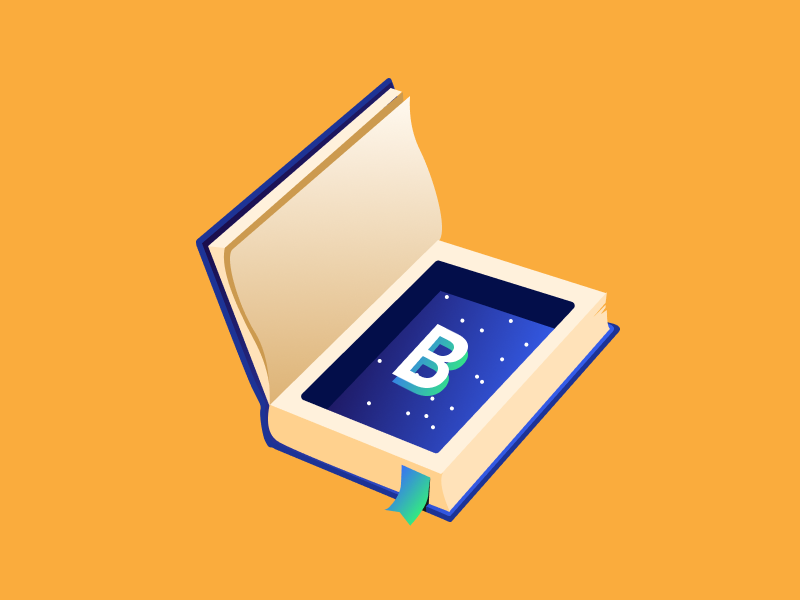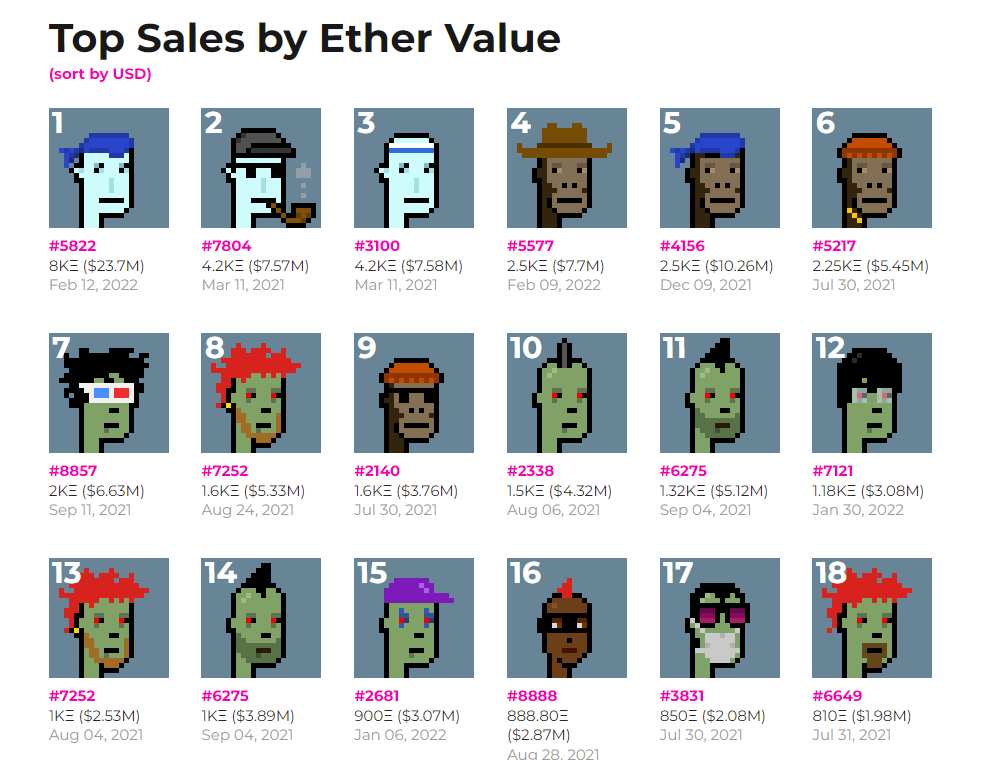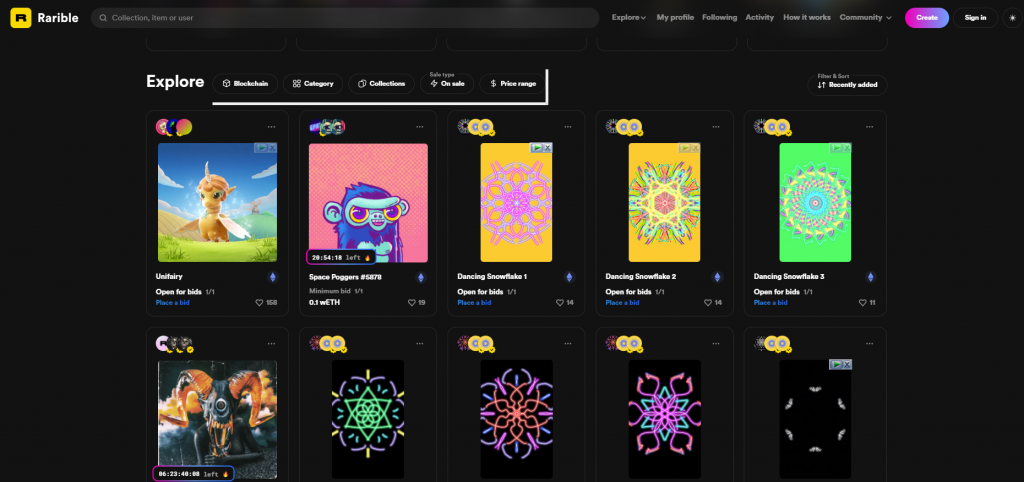15 Popular NFT Terms to Know For Beginners

The NFT industry is one of the fastest-growing industries in the crypto world. In January 2022, OpenSea, one of the largest digital NFT marketplaces, reached the $5 billion dollar mark in monthly transactions. This figure is a new record for OpenSea. It coincides with the word ‘nft’ becoming a trending search on Google. This shows that interest in the NFT industry is at its peak. Many new players started to buy and create their own NFT. However, if you are just trying to enter the NFT world, you will be faced with a lot of foreign terms that you do not understand. You need to understand terms like minting so you don’t make wrong decisions or even get scammed. So, what are some popular terms in NFT that you need to know? This article will explain the various terms surrounding NFT.
Article summary
- NFT is a unique digital asset stored on the blockchain network. Many people collect NFT artworks because they love them. On the other hand, many also collect NFT for investment reasons because it is now seen as an asset.
- The increasing popularity of NFT also encourages the creation of various NFT communities on social media. These communities often contain a mix of those who actively collect NFTs and also invest in various crypto assets.
- The crypto and NFT community often use various terms that sound foreign to those of you who are new to the crypto world. Therefore, before investing or collecting NFTs, you need to understand the various terms commonly within the community.
What are NFTs and how did they become popular?
NFT is a unique digital asset stored on a blockchain network. At the same time, NFT is seen as a hobby as well as an investment. Many people collect various NFT artworks because they like them. On the other hand, many also collect NFT for investment reasons because it is seen as an asset. This pushes NFT into the realm of the mainstream where many popular figures have NFTs from big collections such as CryptoPunks and Bored Ape Yacht Club (BAYC).
The increasing popularity of NFT also encourages the creation of various NFT communities on social media. These communities often contain a mix of those who actively collect NFTs and also invest in various crypto assets. If you are new to the world of crypto and NFT, you can get a lot of important information from the crypto community on social media. However, these cryptos and NFT communities often use various crypto-specific terms that sound foreign to those of you who are new to the crypto world.
Therefore, to understand various aspects of NFT and understand the conversations surrounding it, you need to know various popular terms related to NFT.
Also read: What is NFT (Non-Fungible Token)?
Some crypto terms used by the NFT community
1. Airdrop
Airdrop is the gifting of free coins, tokens, or NFT assets to a group of people or a community. This is done to increase interest and hype for a project in anticipation of the launch of something (it could be a mainnet release, game, or a new collection). In the NFT community, this airdrop usually gives NFT or a project token to its community.
The most recent example is the Bored Ape Yacht Club (BAYC) which gives ApeCoins to everyone who holds a BAYC NFT collection.
2. Alpha
In the NFT world, Alpha means having access to important information that most people don’t know. Alpha usually refers to providing information about a project or promoting a project that is considered to be highly profitable in the future. Many people in the crypto community spend hours finding undiscovered projects, and sometimes, they share them on social media.
However, you need to be careful when receiving information like this. Always do thorough research on a project before blindly buying and investing in it.
block-heading joli-heading" id="3-whitelist">3. Whitelist
The NFT minting process can be very competitive, especially with popular collections that have great enthusiasm. An NFT collection is also usually very limited. NFT developers can create a whitelist system to make the whole minting process fairer and to create enthusiasm for the project.
Everyone on the whitelist list is guaranteed to get the NFT for a low price or even free. Usually, you need to do something to get on the whitelist like sharing the project with other people or inviting friends. This is one of the most important NFT terms to know.
4. Blue Chips

Similar to stocks, blue-chip means a stable, strong, and popular project. Blue-chip NFT projects usually have fairly stable prices and are good long-term investments. Some examples of blue-chip projects in the NFT industry are CryptoPunks by Larva Labs and BAYC from Yuga Labs. These two are one of the most popular and earliest NFT projects with prices starting at 80 ETH.
5. Diamond hands
A diamond hand is a term used to describe people who have confidence not to sell their NFT assets in the long term even if the price drops. When you announce that you are a diamond hand, it means that you decide not to sell your asset even under price pressure and high market volatility.
6. ERC
ERC is a technical standard format that every NFT on the Ethereum network must follow. All NFTs in Ethereum generally follow the ERC-721 or ERC-1155 format. There are complex lines of code in both technical standards that enable the creation of NFT.
7. Price floor

Harga floor pada koleksi NFT BAYC.
The floor price is the lowest price offered in a single NFT collection. Referring to the example above, out of a total of 10,000 NFT BAYC available, the lowest NFT BAYC price on the market today is 103 ether (ETH).
8. Gas costs
All applications on the Ethereum network can be compared to a car. You need gasoline to run every car you use on Ethereum. Gas fees are the gas you use to make all transactions, including buying, selling, and creating NFTs. Just like a car, if the road (network) is jammed, you need additional gasoline to reach the same destination.
If Ethereum is experiencing network congestion, you will need higher gas fees to perform the same transaction. This is because Ethereum is still using proof-of-work (PoW) mining technology. Meanwhile, networks with proof-of-stake (PoS) technology such as Solana and Tezos provide an alternative because the transaction fees (gas) are very cheap.
9. Minting
Mint is another language for creating commonly used in the NFT industry. Minting means you want to create your own NFT to then sell it on certain digital markets. When you mint NFT, it means it enters the blockchain network (usually Ethereum) as an ERC720 Token. After that, you can register your NFT and sell it immediately.
10. Secondary market/secondary market

The secondary market is the market that sells NFT from other investors or traders. This term is also used when you buy NFT from second-hand markets, not directly from the NFT maker. Examples of Secondary Markets are OpenSea, Rarible, etc.
11. drops
A drop is a term used to describe a newly released NFT collection or about to be launched soon. The drop indicates the early launch of a new NFT collection or project. If you buy a collection at the time of its release, you can buy it at a price that has been determined by the maker, not the market price after it became popular. Buying NFT during a drop can give you a big advantage if you choose the right project. A drop is an important NFT term to know if you’re looking to buy new collections.
12. Rarity
One of the important factors to determine the value of an NFT is its rarity. Each NFT has unique and different properties. So, these properties help determine the price of each NFT. Some NFTs that have sold at high prices are usually a very rare part of their collections. Therefore, buying an NFT with a high rarity number means that you are holding an NFT that has the potential for large profits in the future.
13. DYOR
DO YOUR OWN RESEARCH or DYOR is the most important term in the crypto world as well as in NFT. The principle behind this term is to do independent research on all the assets and projects you wish to purchase. In the crypto world, it’s very important to research, read, ask questions and do whatever else you need on your own before following and copying other people’s investment decisions.
14. Shill
Shill is a term that describes when someone promotes an asset they own or a project they invest in. Someone who shill means they believe in the NFT assets or projects they own. This is a popular NFT term you need to know as it is widely used. In addition, a shill is also used when you are looking for a new NFT project and want to ask someone else, for example: “shill me a good NFT project!”
15. Delist
Delist is the term when you remove your NFT from a digital marketplace like OpenSea. That means you don’t sell your NFT and no one else can buy it. Someone doing Delisting means believing in the NFT project in the long term or at least wanting to wait until the price increases. In addition, delisting is also a way to increase the price of your NFT so you don’t accidentally sell it at a low price.
Buying NFT using cryptocurrencies
Before you start buying NFT on the various marketplaces above, you must own Ethereum . You can buy ETH on the Pintu app. Through Pintu, you can buy ETH in a safe and convenient way.
In addition, the Pintu application is compatible with various popular digital wallets such as Metamask to facilitate your NFT transactions. You can download the Pintu app on Play Store and App Store! Your security is guaranteed because Pintu is regulated and supervised by Bappebti and Kominfo.
You can also learn more about crypto through the various Pintu Academy articles which are updated every week! All Pintu Academy articles are made for educational purposes, not financial advice.
References
- The Ultimate NFT Glossary | Ledger, Ledger, accessed on 22 March 2022.
- The ABCs of NFTs – A Crypto dictionary – Terra Virtua Blog, Terra Virtua, accessed on 23 March 2022.
- Gabriela Ross, A to Z: The NFT Glossary for Beginners, Bueno Art, accessed on 23 March 2022.
- Jon Torrey, The Ultimate NFT Slang Dictionary, Starts with NFT, accessed on 23 March 2022.
Share
Related Article
See Assets in This Article
ETH Price (24 Hours)
Market Capitalization
-
Global Volume (24 Hours)
-
Circulating Supply
-


